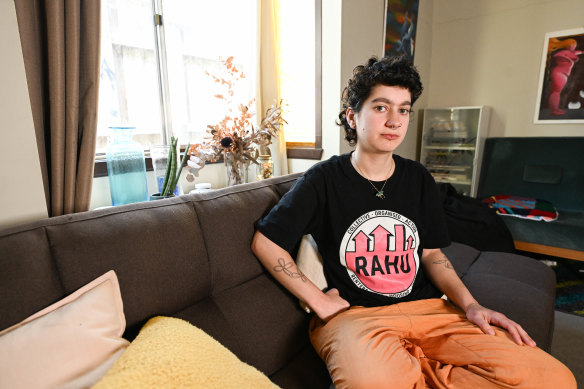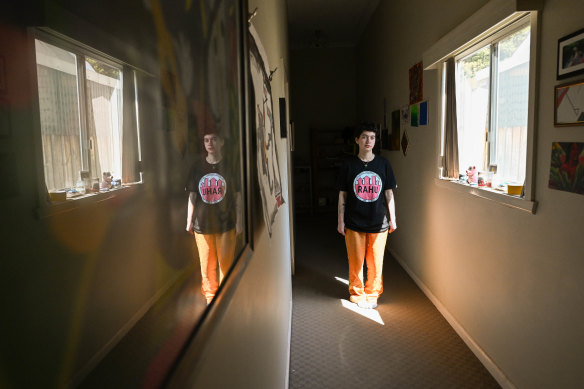The Melbourne suburbs where rents jumped 30 per cent in one year
By Jim Malo
Landlords in the majority of Melbourne rental markets are asking for more rent than this time last year, some by as much as 34 per cent, even as the hot market starts to lose steam.
Houses and units in most suburbs recorded double-digit growth in the year to September, and only seven markets were stagnant or went backwards over the same period.
It comes as the most recent Rent Report from property listings site Domain found median house and unit rents were stable during the September quarter, though they remain at unaffordable and record highs of $580 per week for houses and $550 for units. The vacancy rate was 1.3 per cent, up from 0.9 per cent this time last year, but still low.
Renters priced out of their homes looking for cheaper accommodation would drive up prices in smaller, less popular suburbs, Domain chief of research and economics Dr Nicola Powell said.
”People shift suburbs, and they go to the bridesmaid suburb that’s a bit cheaper,” she said. “Previously it was centred on the inner-city locations, but now it’s looking like some inner-urban areas that are doing better than others.”
House asking rents rose the most in the tiny northern suburb of Bellfield, up 33.9 per cent over the year to $643 per week. It was followed by Toorak, where rents rose 30 per cent to a median of $1300 per week. East Melbourne was next, up 29.4 per cent to $1100 per week.
Powell said the two high-end suburbs were outliers in the quarter’s results, however. The next biggest jumps in house rents were in Heidelberg West, Kingsbury and Jacana, each up more than 25 per cent.
Impact Economics lead economist Dr Angela Jackson agreed affordable suburbs had borne the brunt of rent hikes. “That is what you’d expect. We’re in an extended period of very low vacancy rates so it’s difficult to find a rental. So you’d expect the competition at the low end is going to get more and more fierce.
“People are priced out of other areas so they’re moving into affordable areas so they’re bidding up the price of rentals in those areas.”
Asking rents for units rose the most in Aspendale, up 24 per cent to $608 per week. Next was Noble Park, up 21.6 per cent to $450, and Caulfield South, up 21 per cent to $590 per week.
“At that suburb level we’re really capturing that long period of time where we’ve seen rents rise, and steeply rise, overall,” Powell said. “We have to remember we’ve seen a strong period of rental growth for both houses and units across Melbourne.
“It’s still a landlords’ market in Melbourne.”
Ascot Vale renter Hunter Sommer said the market’s high prices meant they felt they had to accept substandard living conditions to find a place to live. The rent on their three-person share house was affordable, they said, but that came with compromises.
“It’s overall not too bad, we don’t have mould,” they said. “There’s that trade-off of everything being really old – we don’t have a dishwasher, a bath, a good kitchen sink but I’m like, ‘that’s what I’m paying for. I’m paying for these conditions’.”

Hunter Sommer said the tight market meant they had to accept substandard living conditions. Credit: Joe Armao
“It’s either freezing or boiling, the windows are really thin … it’s falling apart in places.”
Sommer doesn’t want to live alone, but would prefer to live in a smaller share house. They’d also like to live closer to public transport, in a more well-connected suburb and in a house that had more effective heating and cooling. But they don’t think they could afford it.
“If I had my choosing, I would pick a place with a smaller garden. But I feel like I can’t choose, so now I have to garden every month and I get in trouble if I don’t garden well enough.
“I shouldn’t have to garden if I don’t want to!”

Hunter said they would ideally live in a smaller home with less requirement for maintenance. Credit: Joe Armao
Sommer was an organiser for the Renters and Housing Union. The organisation’s secretary, Harry Millward, said it was concerning that affordable suburbs were increasing in price.
“It’s just the problem catching up to the places where it’s been avoided so far,” he said. “We’ve got pressure from real estate agencies and investment landlords who see it as an opportunity to grow their portfolio and raise their prices.
“If you buy into those cheaper places and raise the rent, they’re no longer cheaper places.”
Jackson said it was hard to see what could improve affordability for renters. “From here I guess the question is what’s going to break this in terms of increasing that vacancy rate to take some pressure out of the housing and rental market – it’s not really clear what’s going to break it in the short term.”